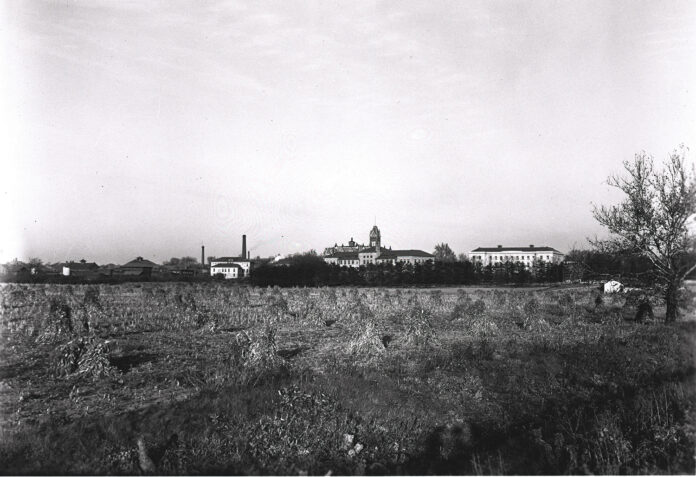
“If we farmers deny the magnificence of our own rurality, how can we blame urban society for treating us the same way?”
— Gene Logsdon, At Nature’s Pace, 1994.
After the Civil War, people had to learn to produce food in the most efficient manner possible. Schools were established to research and teach agriculture and were on the front line of the food production revolution. In order to feed a growing nation, farms had to be productive and successful. Who else was going to feed the nation, enrich the soil, and perpetuate a strong rural economy, necessary for the nation’s future success?
In 1862, a Vermont Senator named Morrill successfully passed a bill establishing land grant colleges. It was a huge success after numerous failed attempts. Once passed, President Lincoln signed it into law, and 30,000 acres of land were granted to members of Congress to establish schools related to agriculture and mechanical arts.
Later, Morrill passed bills that appropriated funds to be used for instruction in these new colleges. “To promote a sound and prosperous agriculture and rural life as indispensable to … national prosperity and security.”
Today, we don’t cherish the farmer or the land. One of the largest farmland owners in the U.S. is none other than Bill Gates, co-founder of Microsoft and one of the richest men in the world.
The large land grant universities hire culinary experts and employ an army of dieticians to produce the fuel that is considered indispensable to the success of its athletes, the teams and the colleges. The culinary team is esteemed for its contribution to the championship, in the same way farmers were once esteemed for producing great food.
I have several copies of the book “Traditional American Farming Techniques” by Frank D. Gardner, originally printed in 1916. It is a gold mine of information, a culmination of over half a century of the greatest agricultural research and production methods studied by the top researchers employed at land grant colleges like Ohio State.
Gardner states, “…one must be impressed with the breadth of the field of agriculture and its close relationship with or dependence upon the laws of nature. No other occupation calls for so great a knowledge in the sciences.”
Inside, there are countless pages of information, everything from the absorbency value of straw based on the grain species, to the production of butter and the sanitation requirements of the dairy farm. This was written before refrigeration was invented. It was written before sports and extracurricular activities were more important than family values.
According to Gene Logsdon, in his book, “At Nature’s Pace,” the pastures where the dairy cattle once grazed at Ohio State are now parking lots for sporting events. The school established for the betterment of rural society, once known as the Ohio Agriculture and Mechanical Society, is now known for its football team.
If cooking the food for the student-athletes on campus is so important to the team, why isn’t growing and raising the food that they eat important? I’m beginning to wonder if the athletes are even eating the fast food they promote in their commercials.
Why am I so comfortably dumb, eschewing the pressures of society to conform? Why are we celebrating athletic and culinary achievements, as indispensable for society while we strategically distance ourselves from the source of the food?
When did successful agricultural practices become disposable? Why aren’t the best and brightest minds meeting on a field to discuss pasture management, instead of practicing plays for the big game?













How is it nobody has left a comment on this yet to answer the simple question? My excuse is I’m just now reading it, purely missed by accident, as I look forward to the next article written by Eric. It’s a simple question really he is asking and maybe the articles are not reaching the people who can answer, but still..the question needs answers. He is right in so many ways and raises way more questions about this society than I think a farm and dairy paper could handle anyhow.
Great article Eric.